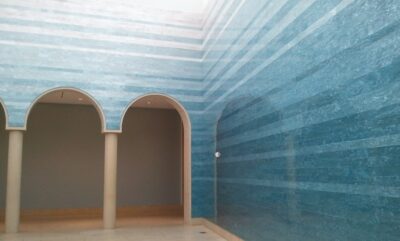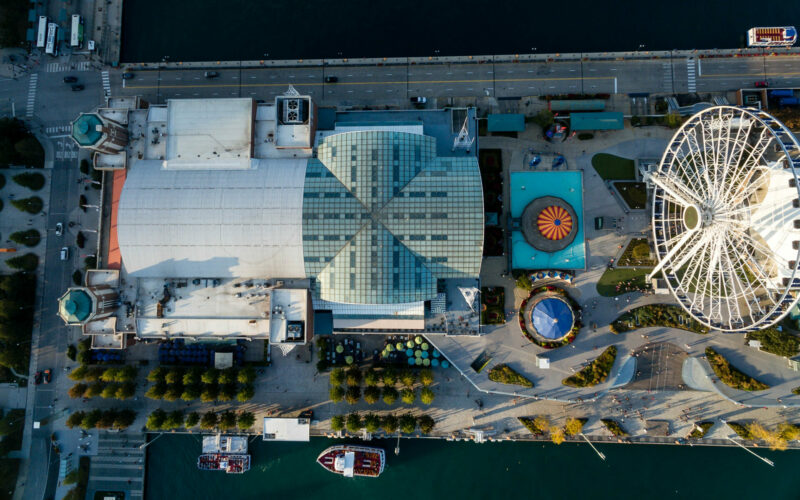The role of curatorial work in our two pandemics: part 1: A hospitable institutional context
02 November 2020 – Elena Gonzales
The United States is confronting two pandemics in tandem: COVID-19, which continues to kill roughly 800 people each day, and systemic, life-threatening anti-Black racism. This latter pandemic has grown up with the U.S. and is far older than it, having traveled to the Americas with Europeans at first contact. Several murders of unarmed Black people by white police officers coincided with the COVID-19 pandemic. They included the murder of George Floyd by Derek Chauvin, and the murder of Breonna Taylor by Jonathan Mattingly, Brett Hankison, and Myles Cosgrove. I highlight the murders of Floyd and Taylor because they formed the center of the perfect storm that awoke many avowedly “not racist” white Americans to the need to become anti-racists. Since mid-March, these two pandemics—and responses to them—have wholly consumed public conversation. Consequently, public history will grapple with these events for decades or longer.
In particular, curators are among the many interpreters who will help Americans confront, remember, and understand this time. Curators are morally obligated to help visitors use this moment to fuel and inform work for social justice–the equitable distribution of risks and rewards–long into the future (see Loretta Capeheart and Dragan Milovanovic’s Social Justice for more on the definition of the term).
Museums are the most trusted source of information in the US and one of the most prevalent types of organization in the world. (In Soft Power, Gail Dexter Lord and Ngaire Blankenberg document 85,000 museums in the world as of 2015, more than the number of McDonalds and Starbucks outlets combined.) But curators work in many other kinds of cultural institutions as well, including libraries, archives, festivals, pop-up exhibitions, galleries, and—increasingly—digital venues. The best curators are collaborators, working with many stakeholders inside and outside of institutions to make stories accessible to, and inclusive of, visitors and neighbors. Historically, the efforts of curators have sanctioned, codified, reified, and maintained many racist, elitist, misogynist, xenophobic, or nationalist structures in our societies, as scholars have long documented. (There are many resources on this topic from AAM to Michael Ames to The Incluseum and far beyond.)
Now, for both ethical reasons and selfish reasons of institutional sustainability and relevance, curators can and must steer their institutions and projects toward social justice. Working against racism and for an equitable approach to public health are interconnected projects that curators can take on today to address our two pandemics.
This is the first of two essays in which I propose five ideas for anti-racist museological work that carries a public health benefit. In part one, I look at the context in which curatorial work takes place and how the institution can set the stage for effective curatorial work for social justice.
Protect the Staff
Until museums and other cultural organizations reach full in-person capacity again, which may be years from now, front-of-house and part-time staff are especially vulnerable to job insecurity and–if working on site–to COVID-19. Institutional anti-racism can begin with labor protections. A museum cannot be fully successful in anti-racist efforts within exhibitions if there are racial disparities in the treatment of staff. Creatively reassigning staff members to projects they can do from home is one way to move the institution forward while protecting vulnerable employees at the same time. Protecting vulnerable employees’ jobs during the pandemic also confers a public health benefit for all. The more people who can afford to stay home, the less the virus can spread.

Stacked Waters by Teresita Fernández, installation art at the Blanton Museum Rapoport Atrium, Austin, TX; Photo credit: Goreyc (Flickr, CC 2010)
Consider the surprising and inspiring example of the Blanton Museum in Texas, which avoided layoffs by redeploying staff to other projects. Early in the pandemic, the director, Simone Wicha, asked departmental directors to identify projects that could be done remotely. She also audited the staff’s skills to discover what abilities each staff member had that may not have been in use for their usual jobs. Then, Wicha matched the 32 employees whose jobs were most vulnerable with the 30 remote projects to keep them employed. Most other museums have laid off large segments of their staff. Most of those workers are part-time employees—front of house and operations. Across American museums, many of these part-time workers tend to be lower paid people of color. So, the example of the Blanton Museum is relevant in terms of labor equity and racial justice.
(Readers who are curious about the status of their colleagues in museums or interested in anonymously reporting on the treatment of staff should visit this crowdsourced spreadsheet about layoffs during COVID. Museum professionals who need financial support or can afford to support their colleagues should visit Museum Workers Speak.)
Develop an Anti-Racist Culture—behind the scenes and for visitors

Bird’s eye view of Chicago Children’s Museum, Navy Pier, and Centennial Wheel. Photo credit: Marco Verch (Flickr, CC 2.0 2017)
Institutional context affects curators’ ability to do anti-racist work. The pause in face-to-face work necessitated by COVID-19 can be a time for institutions to form a detailed strategy for going back to work in a culture that is actively anti-racist. Though it has focused on Diversity, Equity, Accessibility, and Inclusion (DEAI) more broadly, the process undertaken by Chicago Children’s Museum over the last four-plus years is instructive. The two staff members who have led the museum’s work in this area have had other jobs alongside their work of internal networking and facilitation around equity. Alexandra Pafilis Silverstein is Director of Early Learning Initiatives and Child Development Specialist. Until recently, John Derbas was the museum’s Supervisor for Play and Learning Facilitators and Guest Connections. They reviewed the MASS Action Toolkit, a free online resource, and worked through it chapter by chapter as a group with staff from all departments. Over the years, with this project as a guiding foundation for their work, the museum has produced resources that lay out their approaches to accessibility, inclusion for LGBTQ+ visitors, and anti-racist work. One of the hallmarks of success is that the efforts of Parfilis and Derbas addressed the front and back of house at the same time, bringing all staff members together in ongoing conversations around race and ethnicity. (Other allied groups focused on LGBTQ+ inclusion and accessibility for people with disabilities.)

The Roebling Bridge between Cincinnati & Newport, RI seen through the eternal flame at National Underground Freedom Center. Photo credit: Kyle McCarthy (Flickr, CC 2.0 2016)
Now that visitors are spending a lot of time at home, museums also have an important opportunity and obligation to communicate and share their commitment to anti-racist work as well as anti-racist resources. Museums such as the National Museum of African American History and Culture (NMAAHC) and the National Underground Railroad Freedom Center (NURFC) have excellent examples of the sorts of resources that can support isolated educators such as teachers working virtually and parents who are homeschooling, as well as visitors who are simply beginning their individual explorations of race, white supremacy, and their role in it all. NURFC’s website teaches visitors about implicit bias and links to the Harvard test, one resource visitors can use to learn about their own biases. NMAAHC offers a nuanced guide to “talking about race” based on the visitor’s role as well as topics such as self-care, historical foundations of race, and being anti-racist.
An anti-racist museum culture is also relevant to public health because an anti-racist stance recognizes that Black and brown people face enormous healthcare disparities in general, and in relation to COVID-19 in particular. Building back an institution that teaches implicit bias and the social construction of race can help prepare our society to respond appropriately to the next pandemic, which—spoiler alert—is climate change. Moreover, an anti-racist stance also recognizes that people of color experience dramatically more long-term stress, itself connected to a variety of health problems, simply by virtue of growing up Black or brown in America. Museums that cultivate anti-racist culture and skills can help our society reach a point where we can raise new generations of Black and brown children who do not experience the racialized trauma and humiliation of prejudice.
As we consider the roles of curators in our two pandemics, we must first consider where curatorial work takes place. This post has been an exploration of some of the ways in which an institution— such as a museum, library, historic site, or cultural center—can prepare to foster curatorial work for social justice. In part two of this essay, I will discuss specific mechanisms for making change within the gallery.
Elena Gonzales, PhD, is an independent scholar and curator focusing on curatorial work for social justice and museums’ roles in society today. She is the author of Exhibitions for Social Justice from Routledge’s Museum Meanings Series (2019).



